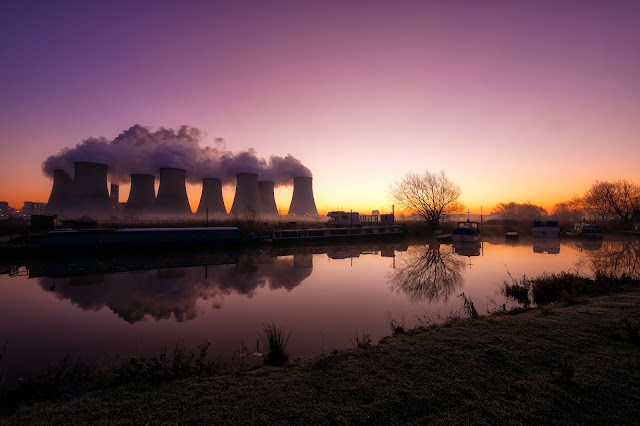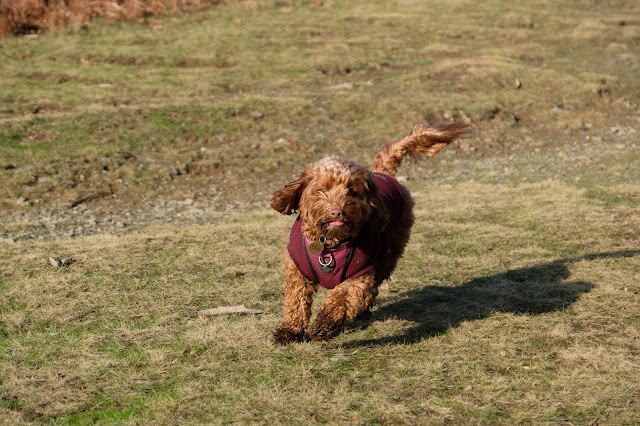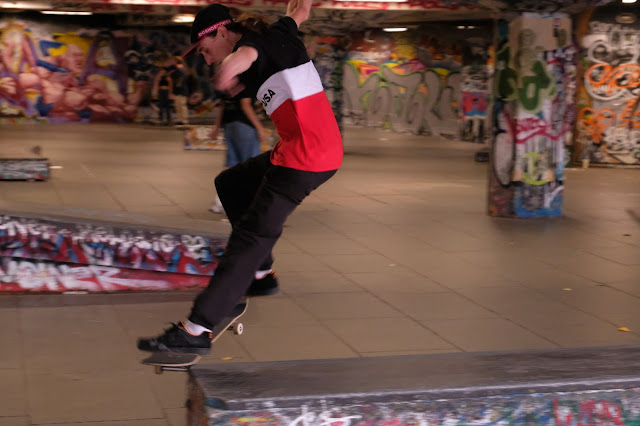 |
Taken with a Fuji XT-2
|
(All images were taken with the Fuji Instax Mini Evo, unless otherwise stated)
(For a more complete review see the following video)
Film photographers are a bit like steam train enthusiasts. They preach how great the technology is, but gloss over the reason we don't use them any more was because they were difficult to use, expensive and to be honest a pain in the butt.
Being old enough to span both film and digital cameras, I have boxes of photos, all taken and printed at great cost, and with a few exceptions, all pretty awful. It was only when I went to digital, that I started really getting to grips with photography and ability to learn from my mistakes were an important part of that (sure about that? - Ed). Film I found unforgiving, and it is so hard to correct your deficiencies when you can only take 36 photos, the results of which you only saw a week later.
Saying all that, however, there is still something about a physical image which will always trump a digital one. Posting an image on Facebook will never have the cachet of handing someone a real object. It is just a pity that film does not have the immediacy of digital. Actually, that is not quite true. Since the late 40's, when Edwin Land brought out Polaroids, there has been a subset of photography that is both analog and immediate.
This year I went to the wedding of the century (no, nothing to do with the Beckhams's), when my niece gets married. Of course outside the immediate family, this is a non-event, and my niece having her own way of doing things, and did not want presents, but still I thought I should do something. Obviously taking photos is one thing, but it felt out of kilter with the wedding, so I thought why not get one of those Instax cameras, take a picture of the guests, stick it in a book and present it at the end...job done.
One issue however was that my success rate with Instax cameras are hit and miss. I wanteda way of getting good photo prints without wasting film. One way would be to use my phone and get a Bluetooth printer, but that required carring two devices and I was looking for the analog look.
Then Fuji announced the Instax Mini Evo. This combined a digital camera with a Fuji film printer, meaning I could review the photos before printing them out.
This is the review of that camera
The review
The camera comes in a small box, together with a camera strap, an instruction manual and just in case you don't alreday have 1000's of the things already, a micro USB charging cable.
Things that the camera does not come with is Micro SD card, and film. The former is excusable, since most of us have loads lying around, and also there is a 40 image in-built memory in the camera. However, the lack of film is a strange omission. The whole point of the camera is to get you to print images, so you would expect they would put at least a 10 shot pack in for the price. This is a bit of a bummer if you receive one on Christmas day, then you have to wait until the shops open to get your physical film.
Also in the box a user manual, consisting of the usual text in 30 languages, with only 4 pages on any use. I do wonder why they bother, really. Stick the manuals online, add more content and save a tree!
The manual uses a small part of the contents to sell the virtues of the product. Apparently it has the highest image quality of and Instax camera (4.9 MP!!!!!). You can use over a 100 effects!! (more on that later). It also has a Luxury classic design!!!
It was the last one that got me. I am not sure what goes for luxury classic design where the manual writer lives, but be assured, this camera is not a Leica. Actually, the feel is more plastic toy than quality camera. This is not helped by trying to do the two things most essential to the camera.
Firstly charging. The camera has a fixed battery, and has to be charged via USB. The port to get to it, is behind a flimsy panel, which will almost certainly break off at some point. Why they could not just stick it on the outside is beyond me. To make it worse, the camera will not operate while charging, so no plugging it in to print off. To me, this is a big mistake. If you are at a party and the battery starts running down, the ability to run it from an external battery pack seems to me essential.
Secondly, is inserting the film. Fuji have gone to great lengths to make the camera look like a analog camera. You would have thought therefore the film mechanism would be like film cameras of yore with the film winder pulling out. No, it is a tiny lever on the back, which is virtually impossible to operate. It takes about 2 minutes to get in. Again, since printing is the primary function of the device, you would have thought they would have come up with a mechanism a bit more slick.
Then we come to the design of the camera itself, Fuji camera designers are the Jacob Rees-Mogg of the camera world. For them, camera design reached its nadir in 1970 and nothing will change their minds. So the camera has the look and feel of a Kodak Instamatic. Emphasizing this is the lens which is 28mm f2.0, fixed aperture, fixed focus affair. The camera comes with no lens cap to speak of, so obviously the designers are not greatly concerned about damage or knocks. Let's face it, this camera will be used almost exclusively for selfies and party pictures, so the lens optics are not going to be stretched too much.
The front of the camera has a large on-off switch, a small flash unit, a selfie mirror(!!!) and two shutter buttons that it can be used in landscape and portrait mode, which is a nice touch. The buttons fall into hands nicely. Less pleasant is the slab face of the camera, meaning there is danger of fingers obscuring either the flash or the lens. Some sort of finger rest would have been useful.
Rounding off the front controls is the dial around the lens. This you would have thought could have been an aperture dial, but actually lets you choose the photo effects.
On the top of the camera is a large rotary dial. This allows you to choose colour effects that can be applied to your image. Also on top is a lever, like a film advance lever of old, which initiates the printing. This is nicely implemented, but you do feel that the majority of the design budget was spent on this, not leaving much for the rest of the camera design.
Completing the top is a fake flash shoe. Why this is here, other than to assuage the Fuji design teams love of Nikon F3's, I have no idea. To be honest, I am surprised they did not add some of those flashcubes to complete the Kodak 126 Instamatic homage
On the back is a reasonable LCD and menu buttons. There is no EVF of course, however a simple glass viewfinder would have been useful and would have added to the whole retro vibe.
The controls at the back provide access to the stored images and a menu button to access things like date/time, print settings etc. Some surprises include face detection, and firmware upgrade functions suggesting that some form of autofocus takes place and that Fuji at some point expect to upgrade the software (Maybe to add video capability :) - Ed )
The back includes a d-pad that allows access to the camera settings, such as self-timer, flash settings (off, on, auto, high speed sync :) ), a macro option and white balance. Probably the most useful is the EVF button, since with a fixed aperture it is pretty well the only way to control over exposure (Strangely +ve EVF is on the left, while -ve is on the right, which seems wrong). It also allows access to a digital zoom, which is as about as useful as any digital zoom. None of these buttons are customizable, which is a pity because it would have been nice to control the exposure compensation directly via the D-Pad or the front dial
Finally, on the right-hand side of the camera is a plastic tripod mount. Strangely there is not one on the bottom, so if you want to take self timed landscape images you will need to find a table or cushion to rest the camera on.
And that is pretty well it. The photos can be stored on a both micro-SD and internal memory can take up to 40 photos. It is not clear what the point of the internal memory is, since the SD card would of been perfectly usable on its own. To get the images of the camera you either have to extract the SD card (not easy accessible ) or Bluetooth since there is no USB download method (The USB is to charge the camera only)
The camera itself has an ISO range of 100 to 1600 and a shutter speed range of 1/4s to 1/8000s, although these are automatically selected. It would have been nice to have control over the speed.
Remote Access
Fuji have taken a lot of grief, quite rightly, on their apps. However, the phone app actually works quite well, allowing the transfer of images and using the camera as a printer. Unfortunately this tends to highlight the camera quality with camera photos looking superior to the native ones.
Camera Effects
The manual states that there are 100 effects. While that is strictly true, they get to that figure by combining both the image effects and the colour effects, both of which are independently settable. However, it is unlikely you will use some of the effects with certain colour modes such as Sepia or Monochrome, so the actual usable combinations are far less.
The image effects are probable the less usable and include such classics as
- Vignette - create a darkened border
- Soft Focus - Nylons effect
- Blur - Blur the edges
- Fisheye - create a false fisheye effect
- Colour Shift - purple fringing
- Light Leak - poor lens effect
- Mirror - Create a mirror effect down the middle
- Double Exposure - self-explanatory
- Half Frame - two images, one in each half of the frame
To be honest apart from the last two I cannot see any good reason to use any of these.
The colour effects change the colour profile of the camera. Again, apart from Vivid and monochrome, the rest seem rather superfluous and is the kind of things that happen when software developers have too much time on their hands.
The effect dials beig so prominent are easy to knock. There is a quick reset button, but it does raise the argument whether these controls should be so prominent compared to the standard exposure camera controls.
In truth while fun to play around with and giving some creative opportunities, pretty well all thse effects could be applied in post, and I think people will get pretty bored of them fast.
Usage
The camera itself is pretty well point and shoot. The LED screen provides a reasonable view, but I would of liked a simple optical one as well for when the light was bright.
Generally I found the images slightly over exposed requiring the exposure comp to be turned down a notch, however with no histogram features it si hard to work out whe the image is over or under exposed. It would of been great however if that could of been controlled from the top function.
Of course you have little or no control over the image exposure time, ISO or aperture
The printing function is very slick. You select your image from the back, press the film lever and 5 seconds later it prints. To get a developed image takes about 2 minutes. Of course the big benefit of this camera is that you can choose which image to print and therefore not waste film.
The camera has a film indicator on the LED in the form of 10 dots. A number or dedicated LCD counter would of been better
Picture Quality
The 1st thing to mention here is that this camera is designed primarily to take prints. Therefore any image issues are slightly hidden by the fact the output is supposed to be a small 1,8 x 2.4 inch print.
However since on of the benefits of this camera is that it is also a digital one, that also needs to be taken into account.
In good light, the images are quite pleasing with good colours. However there is limited dynamic range meaning highlights quickly get blown out. As the light gets worse, however it is a different story, with photos quickly falling apart in only average light. Since this is a camera which will get used primarily at indoor parties, that is unfortunate.
Of course you have a flash to compensate for this, but this will further use your battery life up. It would also have been better to have a dedicated Flash button on the side of the camera.
 |
As the evening went on, image noise became unacceptable
|
Conclusion
One thing that surprised me about this camera is how pleased people were to have the images and it is easy to forget that the Gen-Z have virtually never dealt or held film. To them images are on their phone, snapchat etc. Having a physical representation is a great novelty.
In that way the camera fulfiulled its brief, and was a great success at the wedding.
However there are caveats....
The 1st one is the price. This camera has a £100 price premium over the other Instax cameras. For that you get a slighter higher resolution camera, the ability to store your images and a LED screen. In truth, it is hard to justify the price premium for those features alone and therefore the camera feels overpriced.
Secondly the question is whether there are better ways of doing the same thing. Pretty well everyone has a mobile phone camera which is far better than the Instax one. Not only that you can store, edit, transfer via the phone. Therefore apart from having it all in one unit, it is hard to see the advantage of just buying a Instax printer and using your phone rather than using this camera and basically saving £100
Finally, the effects are gimmicks which could of been ditched and instead Fuji could of provided better controls such as a exposure compensation dial and a flash control button. However it did make me think perhaps that Fuji missed a trick.
One thing Fuji cameras are famed for is there film simulations. Rather than niche effects it would be better to be able to print out a image as Kodak Gold, or Ilford B&W.
In truth I enjoyed this camera more than I thought I would. However Fuji just could not seem to decide whether this is a fun camera or something more serious so priced it at the serious end, but did not back it up with the controls required for you to take control of the image. I think there is something there, but not at this price and design.
For a more complete review see the following video










.JPG)
.JPG)
.JPG)
.JPG)

.JPG)

.JPG)


.jpg)
.JPG)
.jpg)
.jpg)


.jpg)
.jpg)
.jpg)

.jpg)
.jpg)
.jpg)






